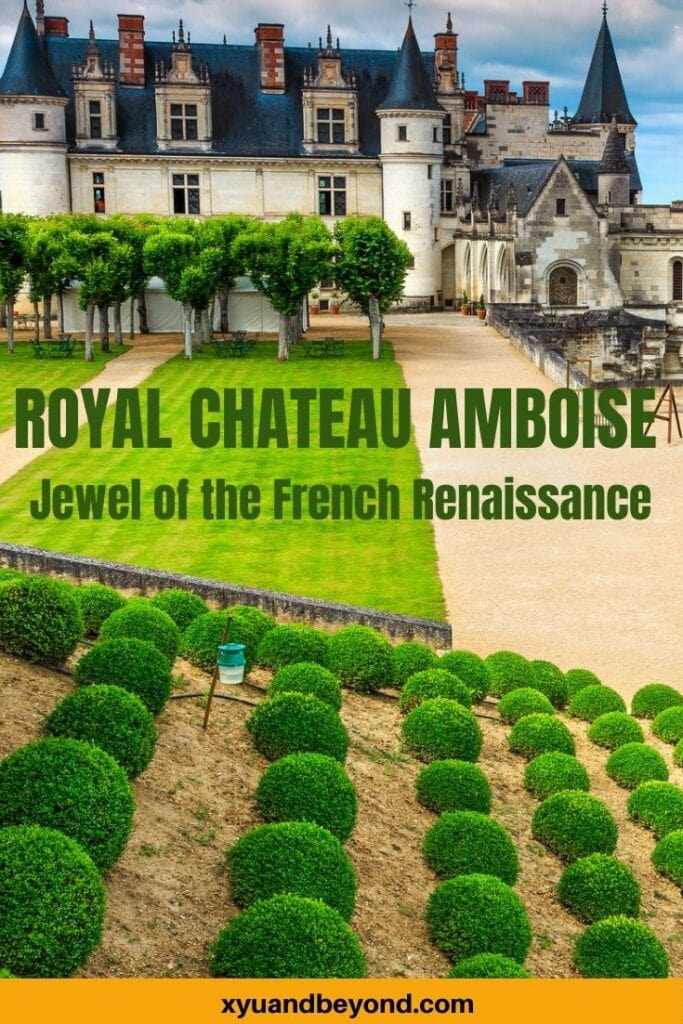Chateau Amboise France – jewel of the French Renaissance
The royal Château Amboise France is located in Indre-et-Loire, in Amboise. The area of Indre-et-Loire is a French department located in the Center-Val de Loire region. Amboise the town is the perfect jumping-off point to visit the Châteaux of the Loire Valley.
We stayed in Amboise for 4 days to explore as many of the Chateaux as we good and the UNESCO World Heritage site of the Amboise Chateau stands as the Gothic and Renaissance centre of town.
Amboise was the first castle in the Loire Valley to combine the gothic style with the Renaissance style. The wing to the left is in gothic style and the wing to the right is in the renaissance style
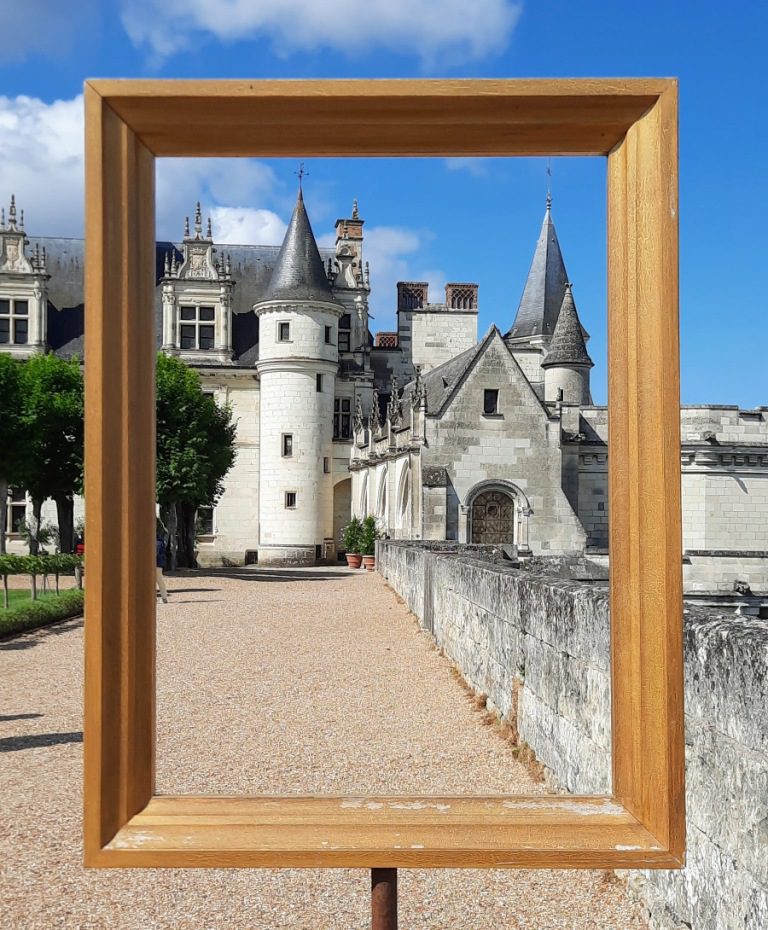

Xyuandbeyond is reader-supported. When you buy through links on our site, we may earn an affiliate commission. You can read my privacy policy here.
What is the Loire Valley?
The area of the Loire Valley is a UNESCO World Heritage area that is comprised of around 800 square kilometres (310 sq mi). It is called “the Garden of France” as there is a profusion of fruit farms magnificent vineyards and oceans of artichoke, asparagus fields, and spectacular sunflower and lavender fields which line the banks of the Loire River.
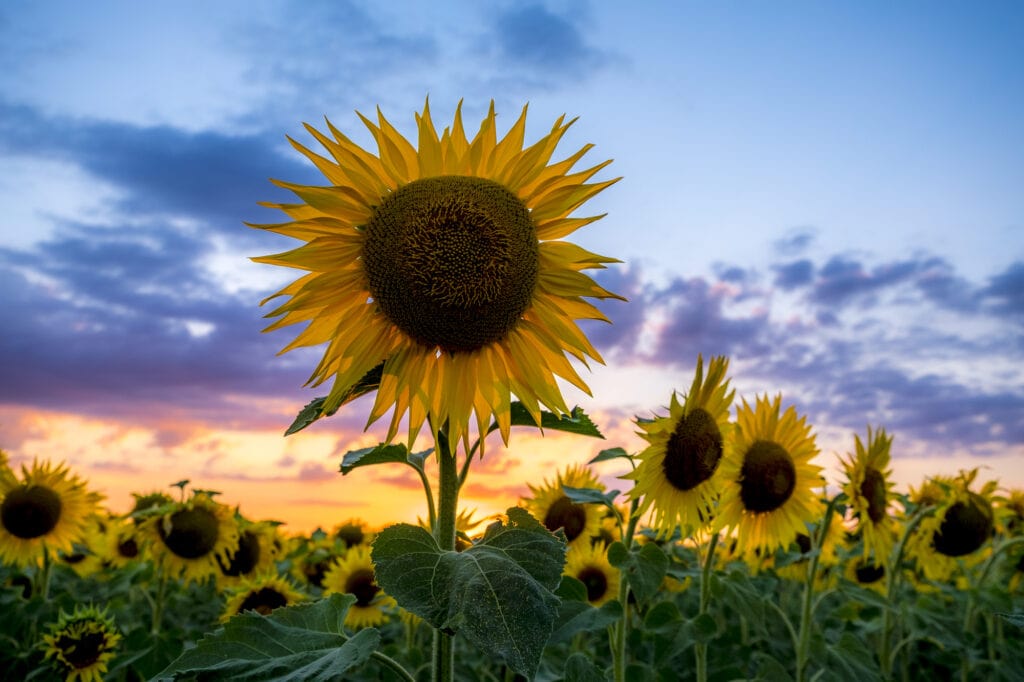

The enchanting Loire region dazzles with over 300 fairy-tale chateaux, exceptional gardens, medieval villages and towns, and extraordinary wines. Considered one of THE places to visit in France this region is simply unforgettable. It’s no wonder it’s considered one of the best places to visit in France.
There is much to explore in beautiful Amboise and the surrounding Loire Valley including the town and its centrepiece the royal Chateau, the home of Da Vinci when he lived in France Château Clos Du Luce, Chenonceau is minutes away from Amboise, Chambord and Blois are relatively close and they are only three of over 80 plus chateaux to visit in the area.
The castle of Amboise is open all year round, and the site of the castle Amboise has been occupied since the Romans first came to France. The site of the castle was originally an oppidum which is a large fortified Iron Age settlement.
When was the Chateau d’Amboise built?
The history of the Château d’Amboise dates back to the 11th century, when the Count of Anjou built the castle on the promontory, surveying the Loire River, as a defence strategy.
The Château Royal of Amboise, was home to every king or queen of France for 160 years, up to the end of the 16th century. Built to control a strategic ford across the Loire that was replaced in the Middle Ages by a bridge. The chateau’s history began in the 11th century, when the notorious Fulk Nerra, Count of Anjou, rebuilt the stronghold in stone.
This privately-owned building has been classified as a Historic Monument since 1840. Its monumental fortress-palace is the very last great royal fortified castle to be built in France.
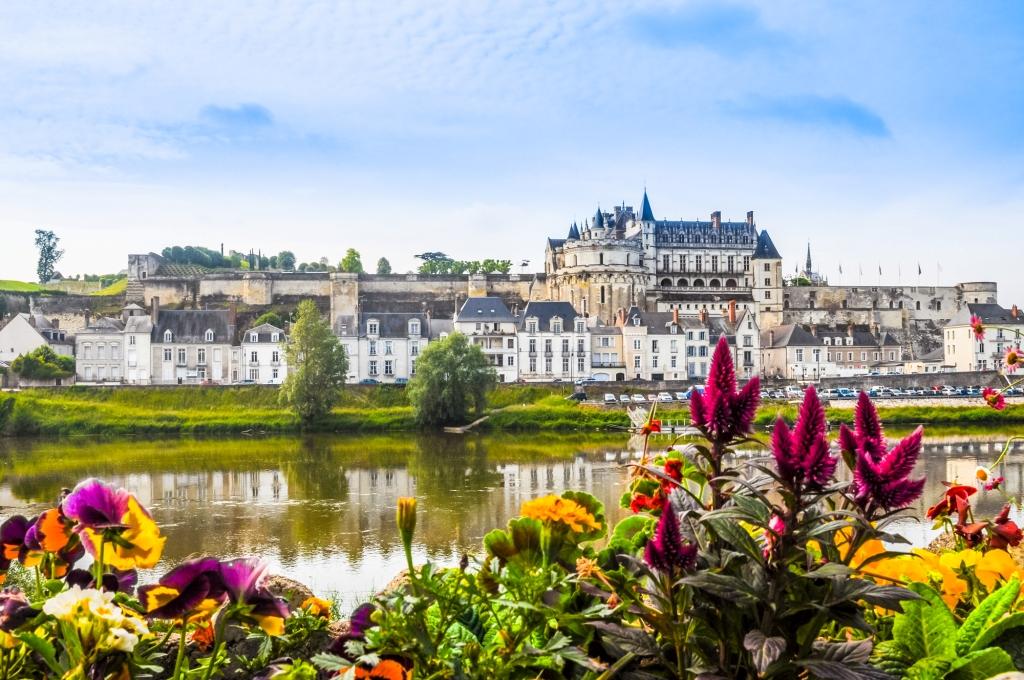

Chateau d’Amboise history
The heart of royal power in the Renaissance the Chateau was the place to live and stay for all the Valois and Bourbon Kings. It was the setting for many age-defining political events in France and presided over royal births, christenings, marriages, peace treaties, and conspiracies.
Over a long period of time, the Chateau Amboise was improved upon and much expanded. In 1429 Joan of Arc passed through the town of Amboise on her way to defeat the English at Orleans, there is much debate about whether or not she stayed at Castle Amboise.
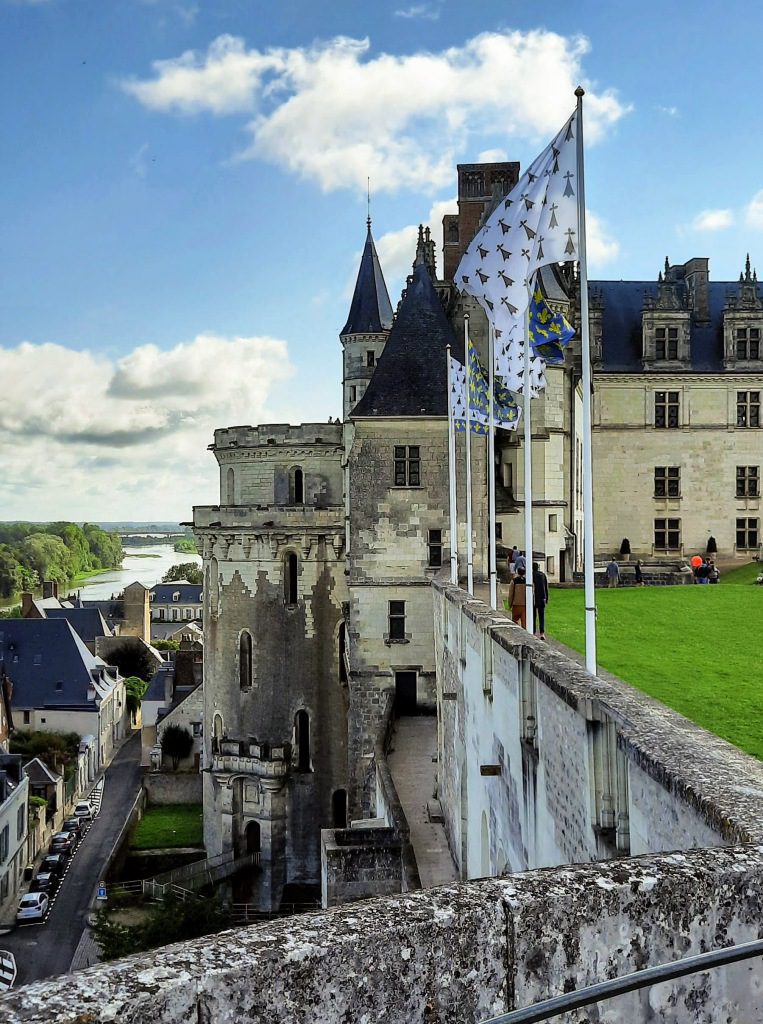

In 1431 its owner Louis d’Amboise was convicted of plotting against Louis XI and condemned to be executed. The King decided to pardon Louis but took the chateau at Amboise.
The château soon became a favourite of French kings; Charles VII seized the castle in 1434 but it was Charles VIII who was born and died at the Castle Amboise who decided to re-model the Chateau in 1492.
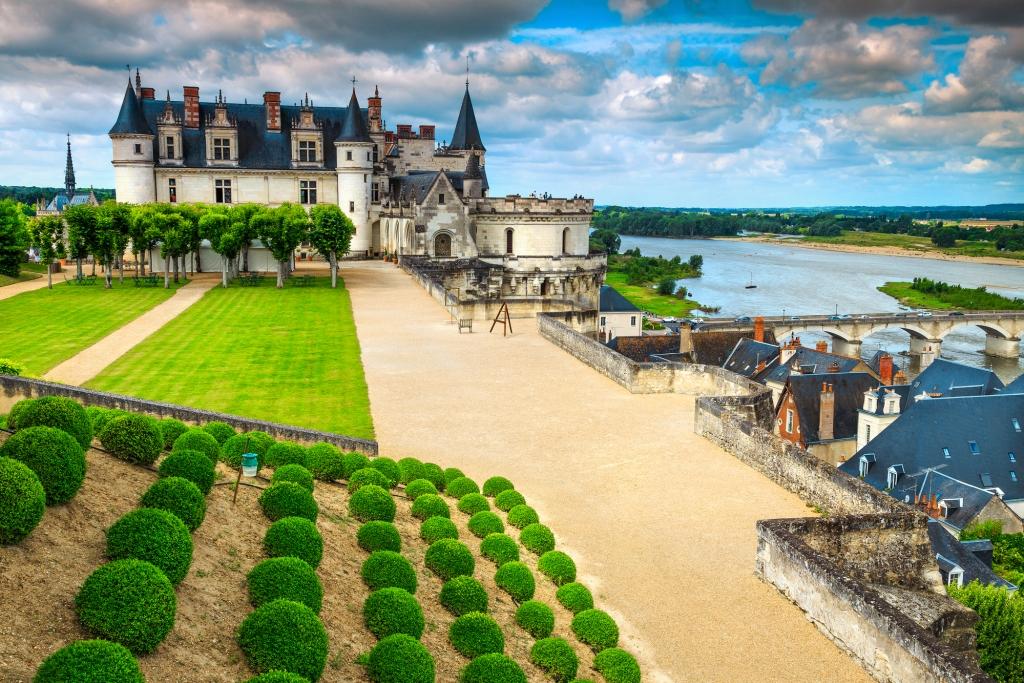

His designs were decidedly French Gothic Flamboyant but he then became entranced with the Renaissance buildings of Italy and he employed Italian master builders to add Renaissance touches to his beloved castle.
Charles loved his chateau so much that he inspected it daily to ensure progress was going according to his demands. One day when he was inspecting the work he hit his head on a lintel and died hours later.


Amboise Leonardo da Vinci
King Francis, I was raised at Amboise from the age of 6 and loved the Chateau and considered it a royal residence. It was Francis who invited Leonardo da Vinci to Château Amboise in December 1515. Leonardo came and lived and worked in the nearby Clos Lucé, connected to the château by an underground passage.
At that time Amboise became the centre of feasting, banquets, and splendid events. Francis I staged massive parties with Leonardo da Vinci designing costumes and entertainment for the royals and their guests.
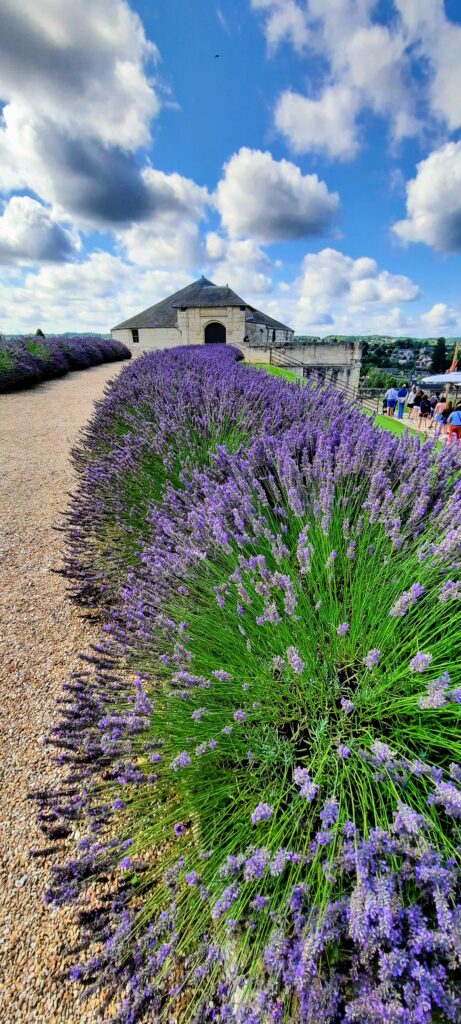

What famous king and queen raised their children in the château d’Amboise? Henry II and his wife, Catherine de Medici, raised their children in Château Amboise along with Mary Stuart, the child Queen of Scotland who had been promised in marriage to the future French Francis II.
Mary Stuart was the niece of the Duc de Guise and the Guise family was an extremely powerful and Catholic family and Francis – who was a sickly weak man – was used by the Guises in their quest for more power and in their desire to destroy the Huguenots who were French protestants.
It was Louis de Bourbon, Prince de Conde who orchestrated a coup d’etat in which the Huguenots surrounded the Château of Amboise and tried to seize the King to attempt to break the Guise’s hold. This coup became known as the Conspiracy of Amboise.
With the conspiracy exposed in 1560, the Protestants were hung from the gothic balconies of the Chateau Amboise. In 1563 the Édict d’Amboise granted freedom of worship to Protestant nobility and gentry to forestall future coups.
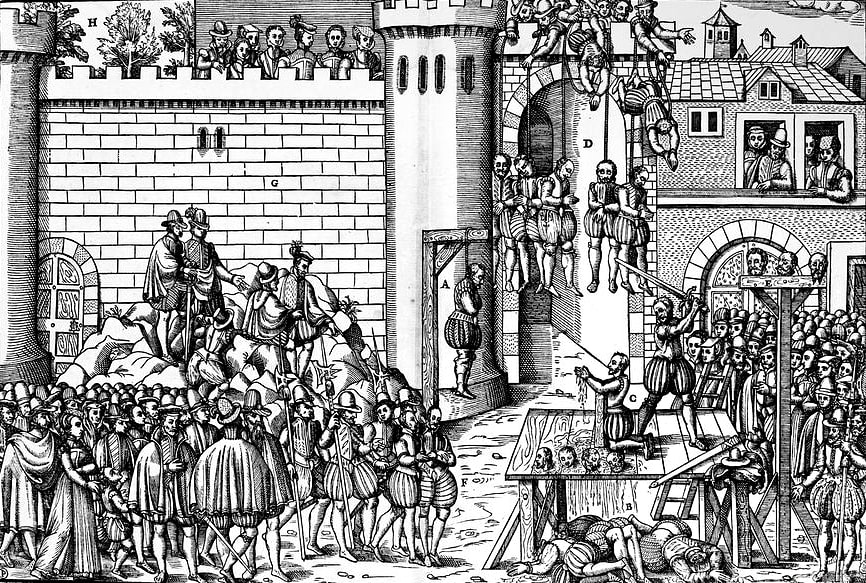

During the French Revolution, parts of the château were destroyed and an engineering assessment commissioned by Emperor Napoleon Bonaparte in the early 19th century resulted in a great deal of the château having to be demolished.
From the time of Henry IV, the château was often used as a prison, and Abdelkader, the Algerian national leader, was confined there (1848–52). Abdelkader was an Algerian religious and military leader who led a struggle against the French colonial invasion in the mid-19th century.
In 1840 King Louis Philippe began to restore the chateau. At that time it was designated a French Historical Monument by the French Ministry of Culture. With his abdication in 1848 the government took over the castle and in 1873 it was returned to the heirs of Louis Phillipe of the Orléans family who began a complete restoration.
World War II and the German invasion caused more damage to the Castle and town and it wasn’t until 1974 that the Saint-Louis Foundation took over its administration and continued its restoration.
What is Amboise famous for? The city is famous for the Clos Lucé manor house where Leonardo da Vinci lived (and ultimately died) at the invitation of King Francis I of France, whose Château d’Amboise, which dominates the town, is located just 500 m (1,640 feet) away
What to see at the Chateau Amboise
Opening Times and Ticket Costs – Château Amboise
Entry to the site costs €15.00 and includes an iPad called a Histopad. With the Histopad you can discover the medieval and renaissance rooms as well as the spaces that have disappeared it is a digital program that allows you to go back in time thanks to its augmented reality, 3D reconstructions, and interactive functionalities. It is available in 12 languages. There is also an audio device that has an adapted route for the sight-impaired.
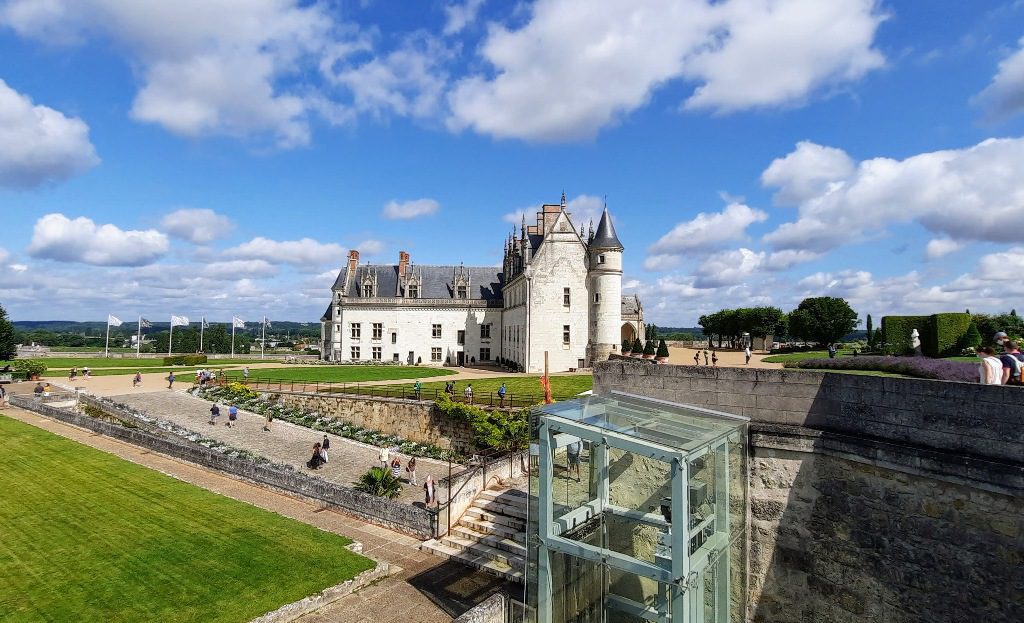

If you are mobility challenged or using a wheelchair you can access the second-floor collections using the histopad. There is access to the café and the upper levels of the grounds via an elevator.
Opening times are from 10:00am until 12:30 and then from 14:00 to 16:00.
Soldier’s foot passage
You enter the royal Château through the foot soldiers’ passage which is accessed by a long ramp leading up from the town. This passage was originally defended by a drawbridge and portcullis and is now decorated with the coats of arms of all the Chateaus owners from the 11th century to the 19th.
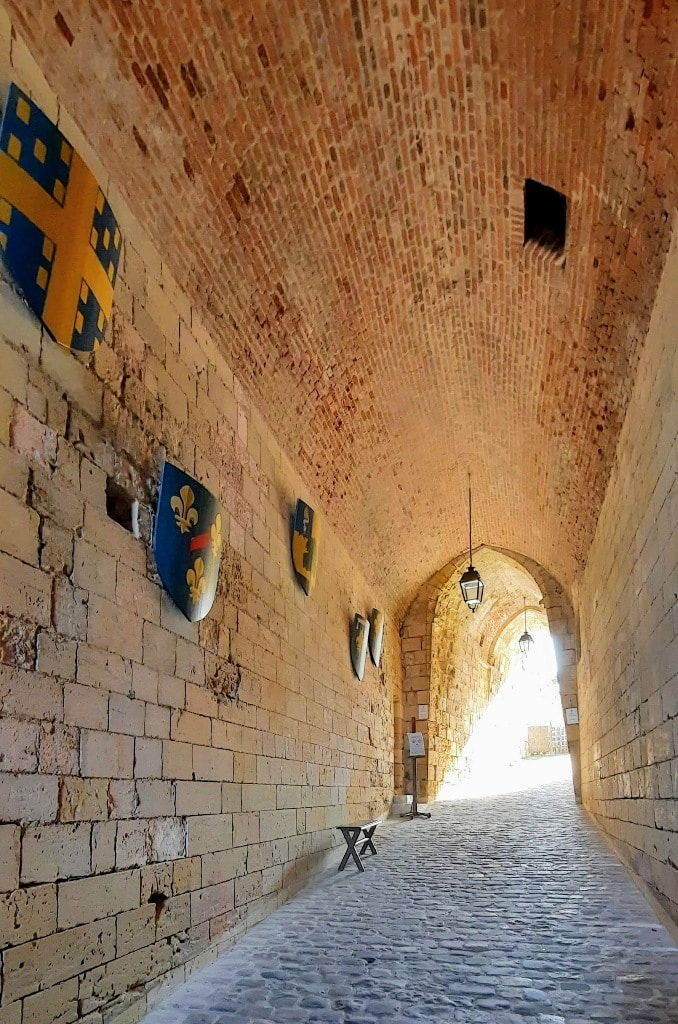

Orangery
Once you reach the top of the ramp you will see the newly-renovated Orangery which is now where a café, gift shop and other facilities are housed.
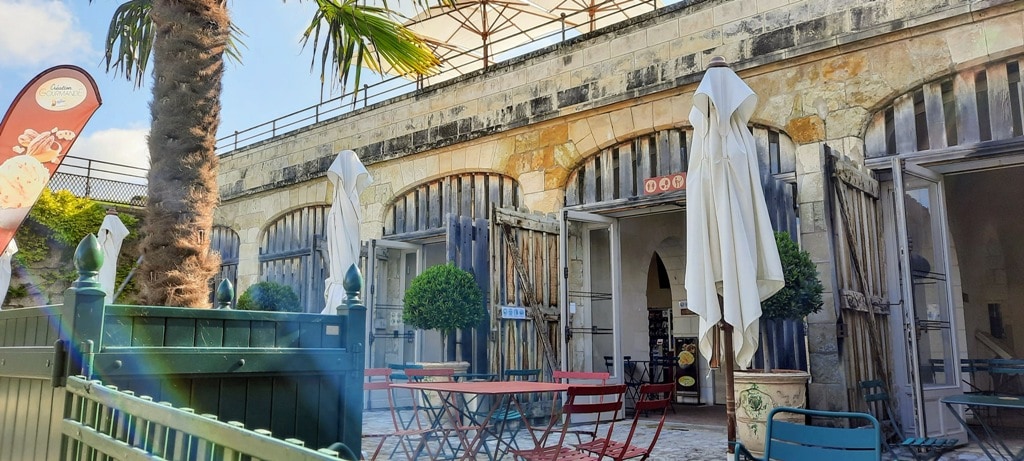

Saint Hubert Chapel
In front of you and to the left you will immediately spot St. Hubert Chapel which was built in 1493 on the foundations of the original Oratory. This is the Chapel that the King wouldn’t allow the locals to worship at and had a church built in the town for them.
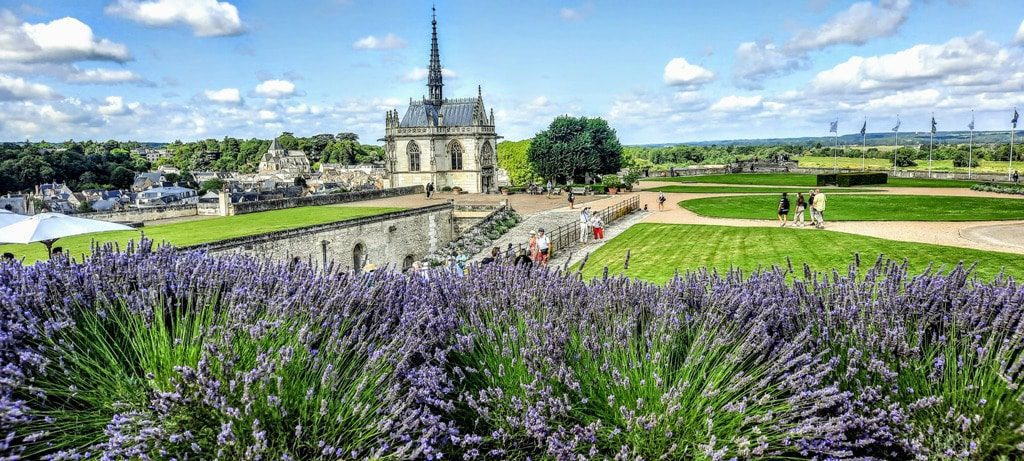

Chateau d’Amboise Leonardo da Vinci
This is the last resting place of Leonardo da Vinci who died at Amboise in 1519. Da Vinci was invited to France by King Francis 1 and was given the Chateau Clos Luce to live in. The chapel is stunningly beautiful built in the flamboyant gothic style the sun streams through the stained glass windows creating gorgeous patterns of colour across Da Vinci’s resting place.
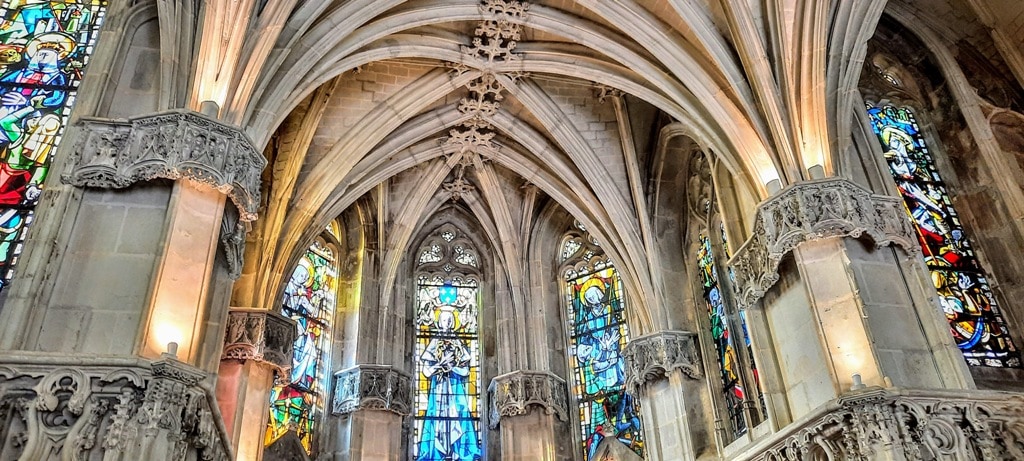

As you wander along the ramparts to the towers you will see views of the town of Amboise and the Loire Valley river stretching for miles in all directions. This walk will lead you along to enter the Chateau itself.
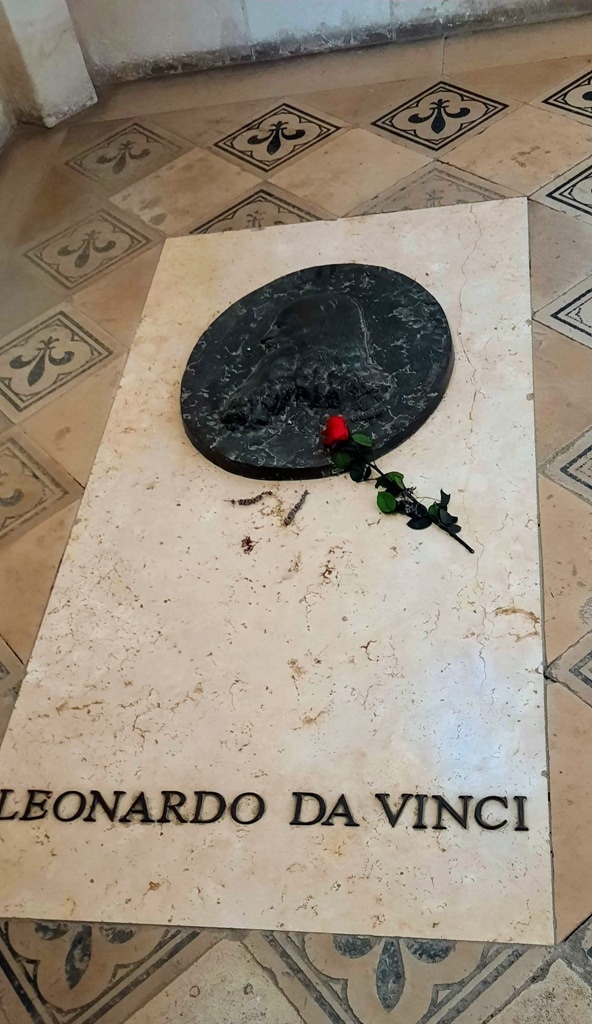

Château du Clos Lucé – Da Vinci’s French Castle
The Chateau de Cloux which is known by the name Clos Luce was built in 1471 on foundations dating back to the 12th century.
King Charles VIII bought the castle in 1490 and for over 200 years it was the royal summer residence of the Kings of France. It was Francis I who owned the castle in 1516 and invited da Vinci to France to settle at Clos Luce.
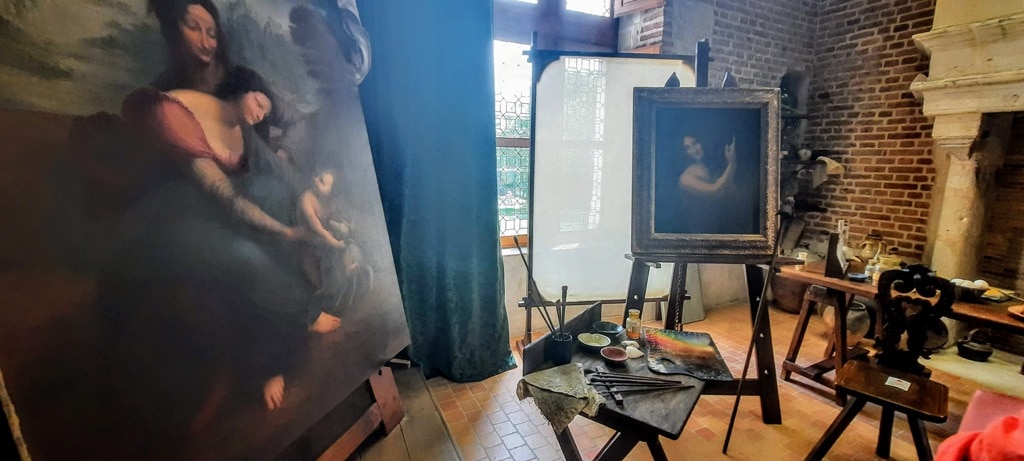

Chateau Guard Room
Within the Chateau you will enter through the Royal Lodge into the Guard’s Room. These rooms were assigned to all the guards who defended access to the floors above to protect the nobles staying at the Castle. The King’s bodyguards were originally made up of Scottish and Swiss guards and later the French Musketeers.


Great Hall
The Drummers Room was once used for the staff and guards to move between the keep’s former gallery and held a staircase to serve King Charles VIII’s dressing room which is now called the Drummer’s Room.
Entering the Great Hall which is where the King held court and participated in the events that were held in the Castle and the adjoining courtyard.
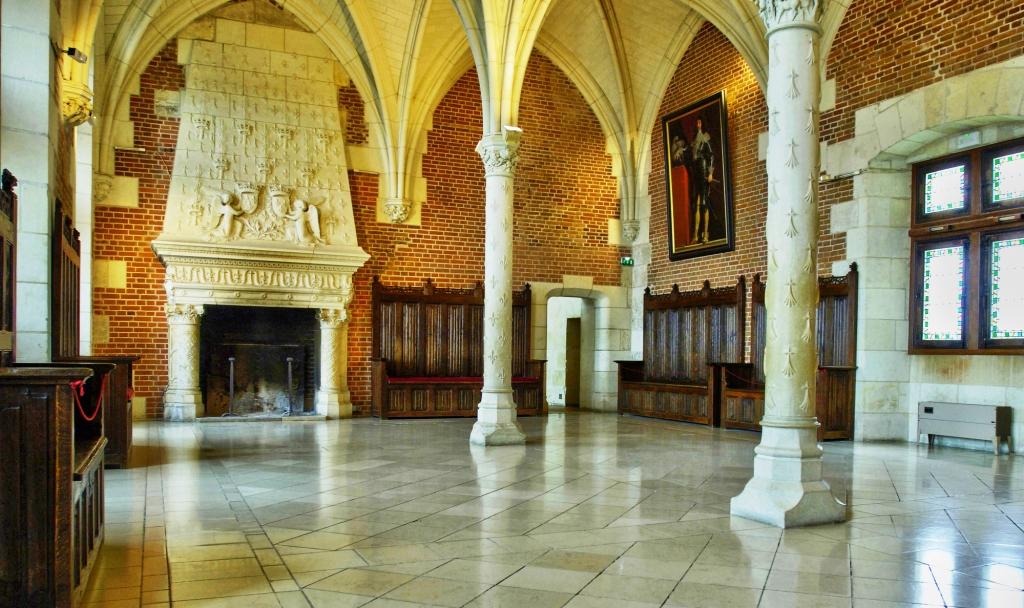

Up the winding spiral staircases, you will find what was originally the Kings Stateroom which now houses a collection of furniture and artefacts representing the King’s Table.
King’s Bedroom
The King’s Bedroom was where Francis I, Henri II (his son), and Catherine de Medici once slept.
The Garderobe is a room that once was the Royal closet, it held all their clothing close to the bedrooms.
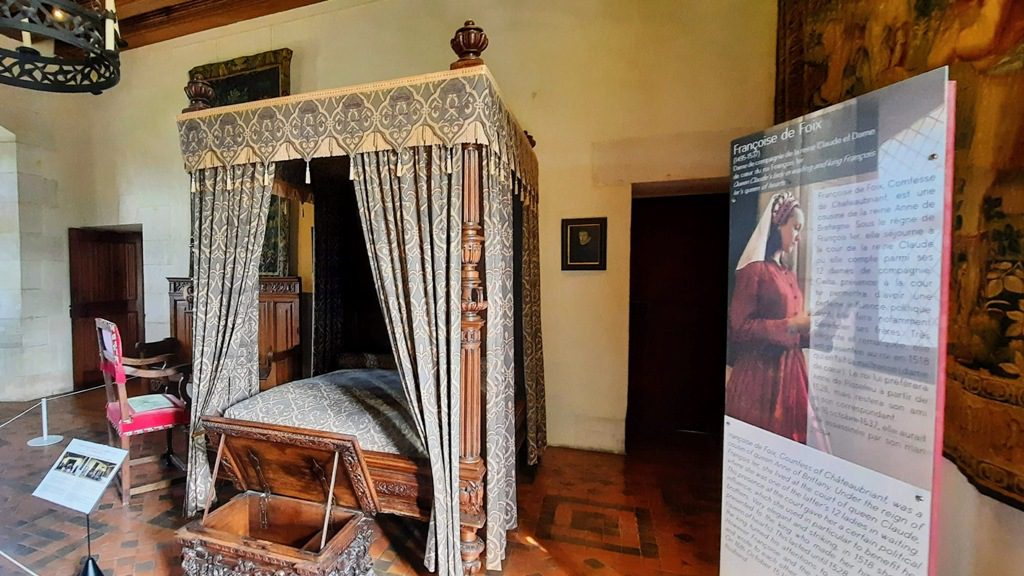

Orleans Apartments
The Orleans Apartments includes the Penthievre Cabinet which is a study containing late 18th-century portraits and furniture from the period.
The Orleans Bedroom is a richly decorated red room with an Empire sleigh bed, a writing table, a crib, and official portraits of the Duc d’Orleans.
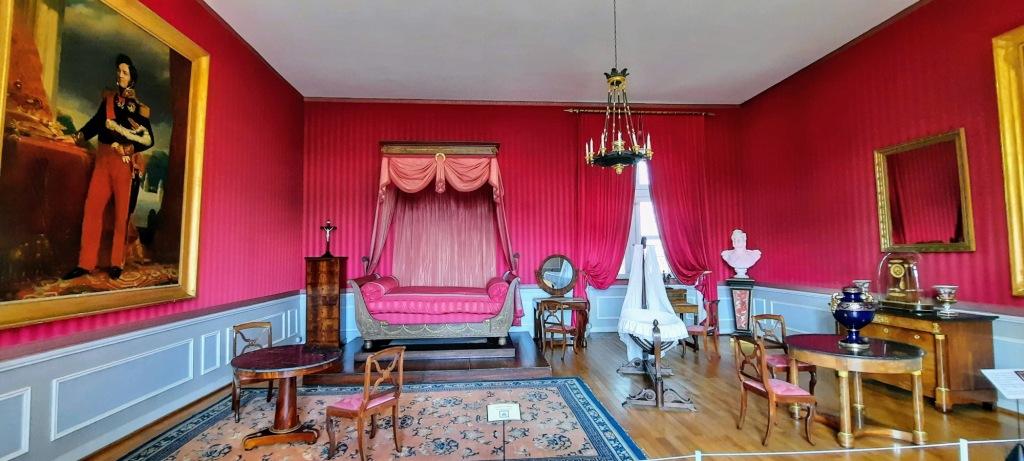

The beautiful Music Room features the same red colouring and includes a 19th-century harp, a series of ‘family’ portraits, and some lovely furniture.
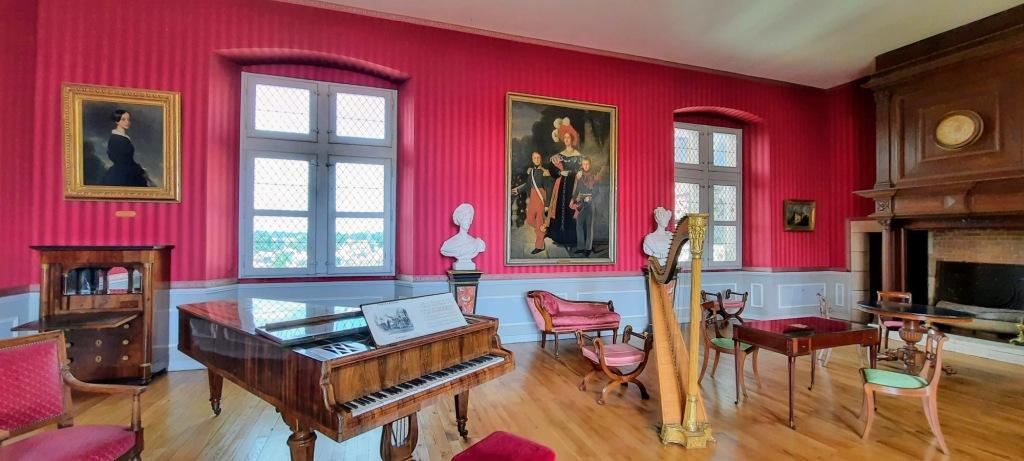

Minimes Tower & Heurtault Tower
The next feature of the Chateau is the Minimes Tower where you can take in the views of the Loire 40 metres below. There used to be a panoramic room built in 1843 but it doesn’t exist today. That was when President Louis Napoleon Bonaparte came to release Emir Abd el-Kader in 1852.
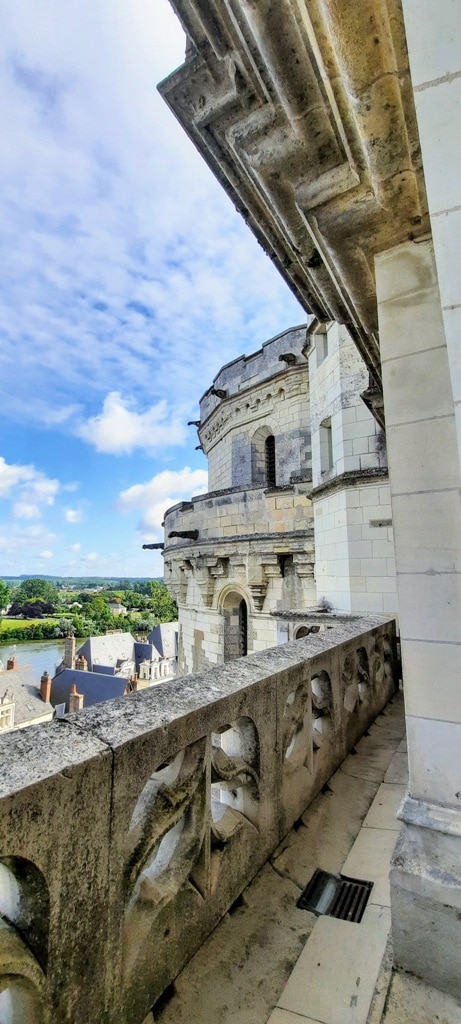

Charles VIII, who was born in the château, wanted to turn it into a magnificent Gothic palace. He began major work, building the Saint-Hubert chapel and new residences connected to two huge knights’ towers, called Heurtault Tower and Les Minimes Tower, which provided access for horses and carriages to the château’s terraces from the banks of the Loire.
The Gardens at Amboise Castle
As you exit the Minimes Tower to the left, you will wander the Naples Terrace garden. The first garden was designed by Dom Pacello da Mercogliano from Naples in the late 15th century. When the Royal Court left the Loire Valley a century later to join the Seine Court the garden was reduced to an alley with trimmed trees whilst the terrace stayed throughout the centuries.
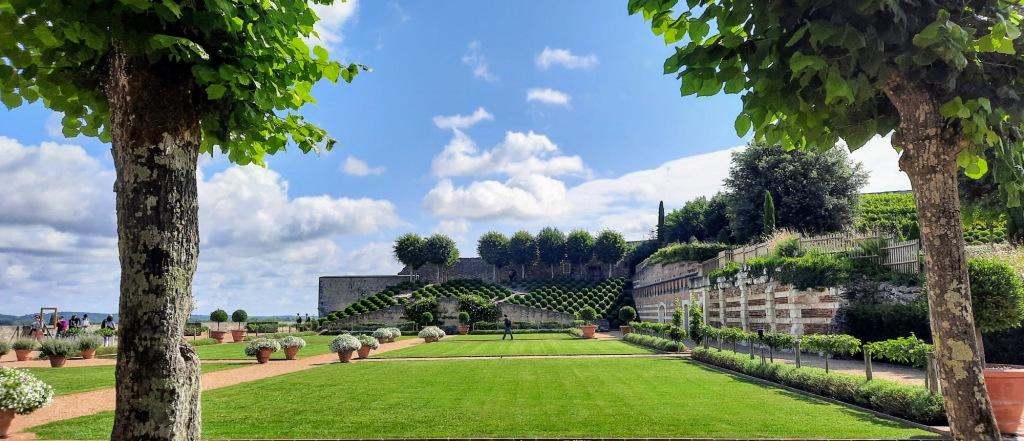

Charles widened the upper terrace, to hold a larger parterre, enclosed with latticework and pavilions; around it, Louis XII built a gallery. The parterres have been recreated in the 20th century as rectangles of lawns set in gravel and a formal bosquet of trees. In the French formal garden, a bosquet (French, from Italian bosco, “grove, wood”) is a formal plantation of trees, at least five of identical species planted as a quincunx, or set in strict regularity as to rank and file, so that the trunks line up as one passes along either face.
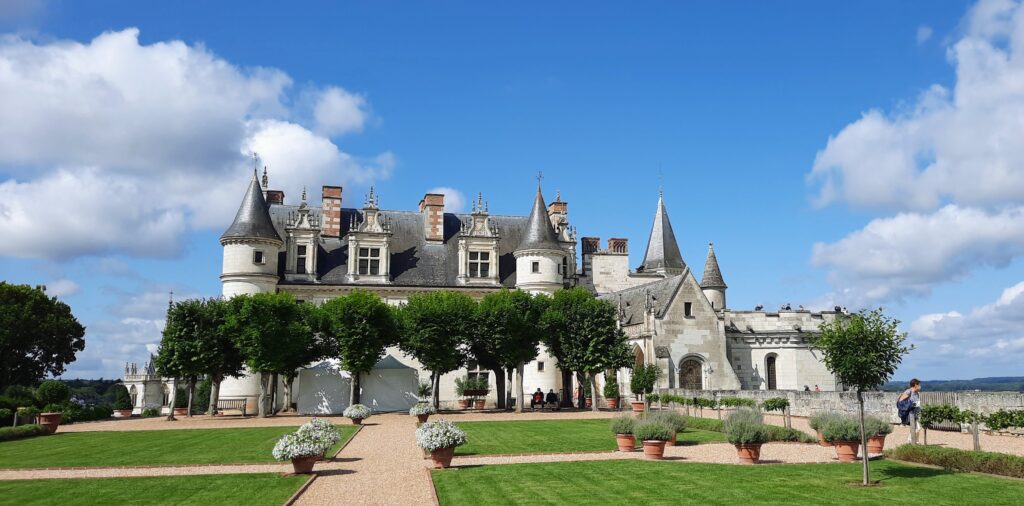

The upper Terrace flows with box hedges that roll down along the ramparts.
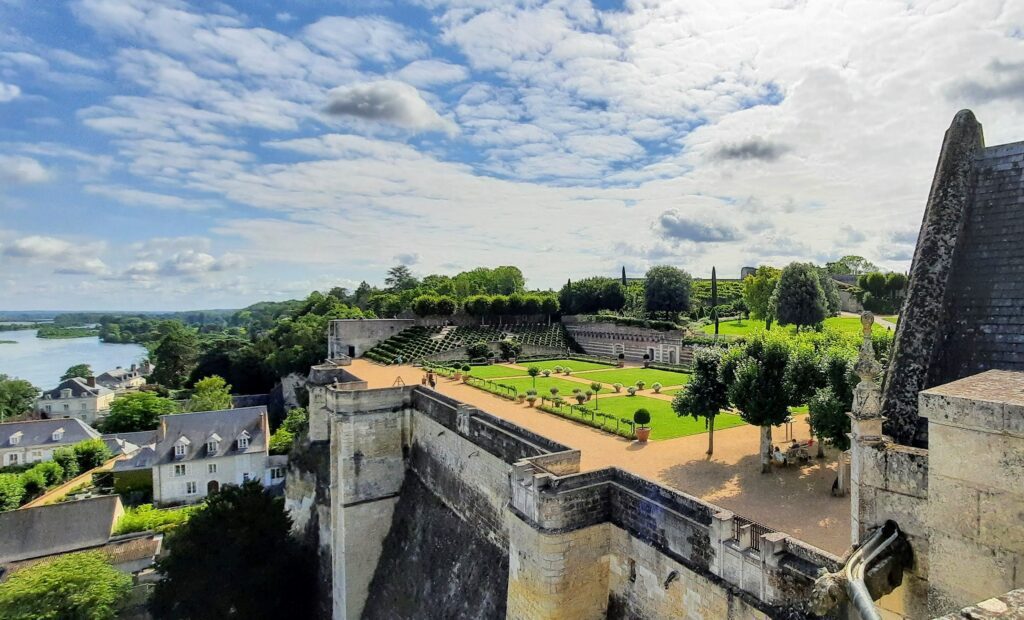

The stunning gardens include row upon row of lavender, Lebanese Cedars, and an Oriental Garden which honours the memory of el-Kader’s companions who died at Amboise.
You will spot a marble bust of Da Vinci that marks the place of his original burial at the St. Florentin Collegiate an 11th-century Roman building where he was buried according to his wishes.
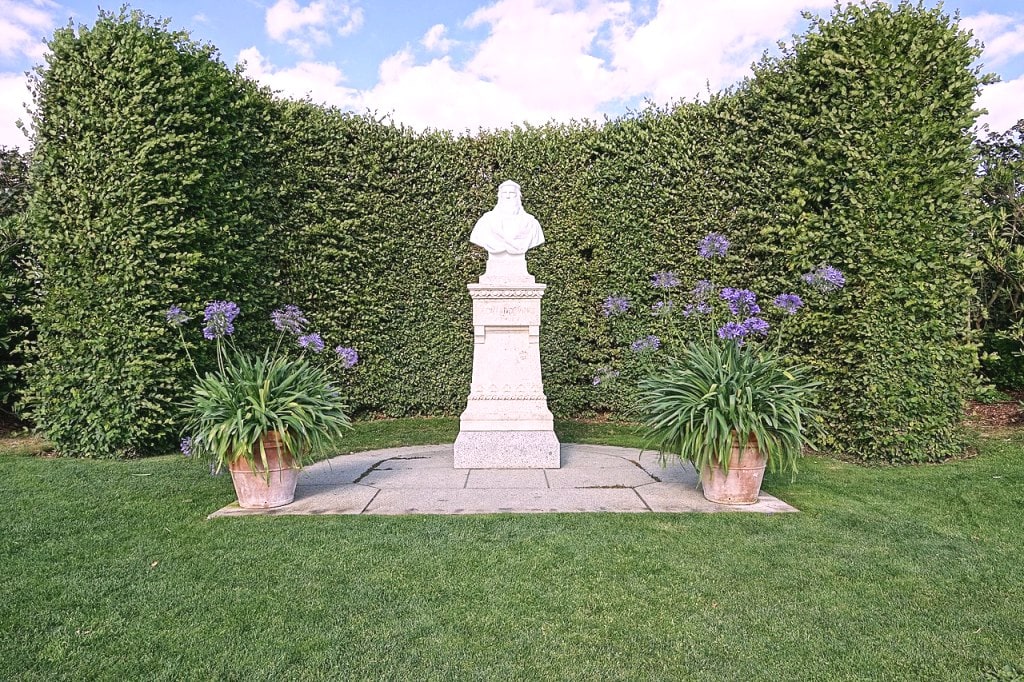

Farniente is a stunning piece of sculpture of a reclining woman set in the midst of lush green grass. The reclining woman was created by artist Laurence Dreano and has taken place on the castle’s grand lawn. This particular sculpture will be in place until September 2023.
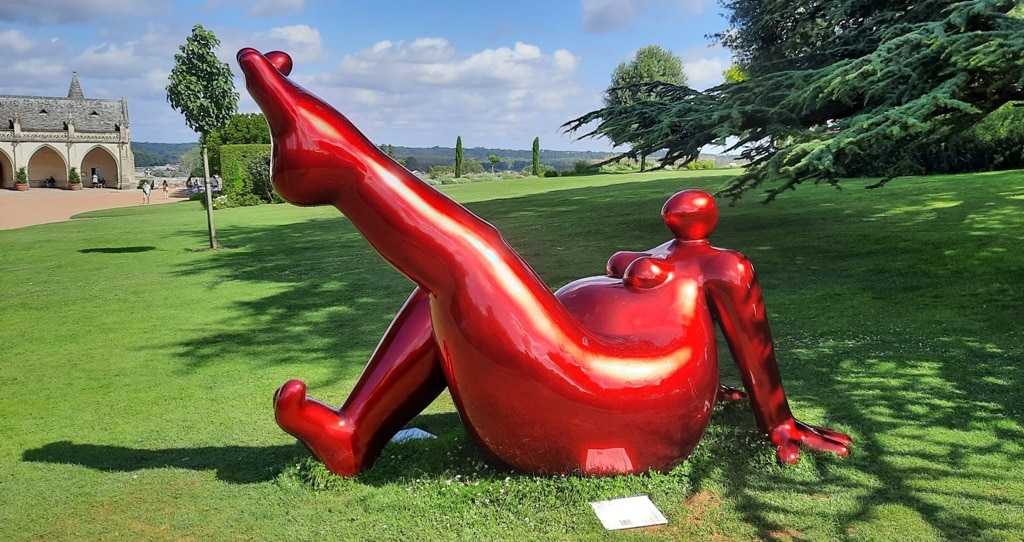

The exit from Chateau Amboise is down a very long sloping tunnel which is where the Knights used to ride their horses down. It is quite steep so watch your step.
Where is Amboise?
Amboise, France, is located in the Loire Valley just 20 minutes from Tours by train and about 225 km (140 miles) from Paris. It overlooks the River Loire between Tours and Blois. The Château royal d’Amboise is located right in the centre of the pedestrianized town.
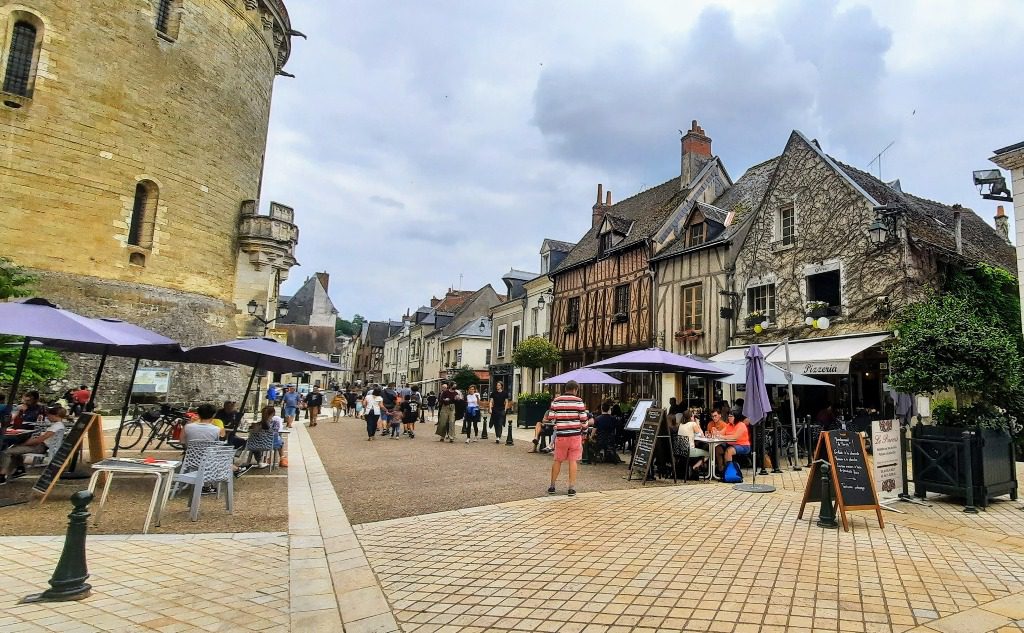

How to get to Amboise
From Paris, you can take the train at Gare d’Austerlitz to Gare d’Amboise. From here I suggest a taxi to your hotel. The TGV bullet trains take under 2 hours to Amboise and there are many cheap flights out of Tours or Orlean to England and Paris.
There are trains during the day from Tours to Amboise practically every hour travel time is about 20 minutes.
Driving to Amboise France: Many people find renting a car is the best way to explore the Loire Valley and its chateaux. If you’re driving to Amboise take care to learn which roads are the toll ones. We paid €19 in total for the toll roads there and the same again on the way home. Rather an expensive way to go but it did save us around an hour each way.
We drove from Lassay les Chateaux where we are housesitting and it took around 3 hours to get to the Loire Valley.
Chateau Amboise is a magnificent castle that has stood the test of time since its construction in the 15th century. Its strategic location on a hill overlooking the Loire River valley has made it an important fortress and residence for French royalty over the centuries. The chateau boasts stunning architecture, including Gothic-style towers and Renaissance-era additions, as well as beautifully landscaped gardens.
Visitors can take guided tours to learn about its rich history or simply enjoy wandering through the grounds, taking in the panoramic views of the surrounding countryside. A visit to Chateau Amboise is a must for anyone interested in French history or architecture and promises to be an unforgettable experience.
What was your favourite Chateau in the Loire Valley?
You might also like
Castles of the Loire Valley France
Chinon France: A Royal Fortress and a medieval city
Chateau de Chenonceau the ultimate guide
Château de Josselin – A millennium of history in Brittany
Pin it to save it
